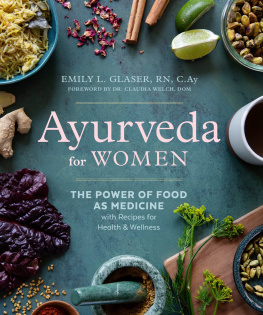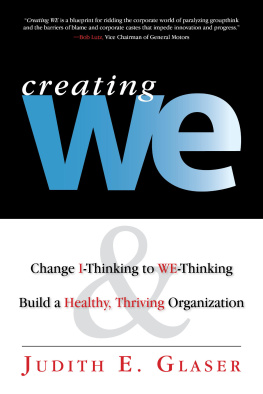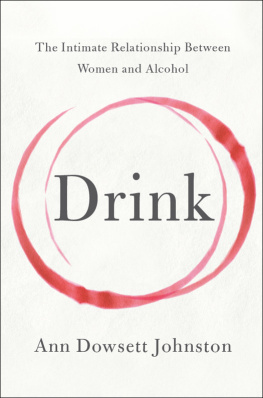Thank you for downloading this Simon & Schuster eBook.
Join our mailing list and get updates on new releases, deals, bonus content and other great books from Simon & Schuster.
C LICK H ERE T O S IGN U P
or visit us online to sign up at
eBookNews.SimonandSchuster.com
We hope you enjoyed reading this Simon & Schuster eBook.
Join our mailing list and get updates on new releases, deals, bonus content and other great books from Simon & Schuster.
C LICK H ERE T O S IGN U P
or visit us online to sign up at
eBookNews.SimonandSchuster.com
Praise for Her Best-Kept Secret
Glaser makes a persuasive case that A.A., which enjoys a monopoly in nearly every recovery sphere, is structurally and functionally unsuited to many women.
The New York Times Book Review
Glaser has written an engaging account of women and drink, citing fascinating studies about modern stressors... and evidence that some problem drinkers can learn moderation.... Bound to stir controversy.
People
Glaser approaches [her topic] with investigative rigor and thoughtful analysis.
Boston Globe
Did you ever consider that [a girlfriend] might be standing at the edge of a liquor cliff? If you didnt, Her Best-Kept Secret: Why Women DrinkAnd How They Can Regain Control is bound to make you reconsider.
Atlanta Journal-Constitution
In a heartfelt and tender examination of the issue, [Glaser] looks not just at the problems unique to women, but at the ways in which methods of recovery may be tailored to the fairer sex to maximize their effectiveness.
Daily Mail
[I]nsightful and provocative... this quick read is full of encouraging and informative advice, and its sure to ignite renewed discussion about one-size-fits-all treatment options.
Publishers Weekly
An important addition to feminist literature that calls upon women to reject a spurious equality whose consequences in broken families, broken hearts, and broken futures are all too real and face up to the problem of alcohol dependency before it takes over their lives.
Kirkus Reviews
With humor, thoughtfulness, and skillful research, Glaser paints a picture of mature female drinking today. Youll see yourself or your friends on almost every page.
Parents.com
A well-researched look into the differences between how men and women drink, what their motivations are for drinking, and how they should cope with drinking problems.
Jezebel.com
That so many American women stand at the edge of a liquid cliff is a surprising and scary problem that Gabrielle Glaser illuminates powerfully. For those who have a loved one standing there, you will find hope here.
Sheryl WuDunn, Pulitzer Prizewinning coauthor of the national bestseller Half the Sky
Her Best-Kept Secret reveals the existence of an epidemic with profound implications for women and their loved ones. This compassionate yet authoritative book explains why millions of ordinary women are turning to alcohol to handle the strains of daily lifeand what they can do about it.
Hilda Hutcherson, MD, bestselling author of What Your Mother Never Told You About S-e-x
Also by Gabrielle Glaser
The Nose: A Profile of Sex, Beauty, and Survival
Strangers to the Tribe: Portraits of Interfaith Marriage
In memory of Nana and Poppy, wholly immoderate in courage, affection, and fun
Prologue
My name is Gabrielle, and Im not an alcoholic.
In the field of women who write about alcohol, that makes me unusual. Much of the memorable writing on this subject comes from women who have suffered from their abuse of alcoholwith broken marriages, ugly custody battles, and repeated DUIs. These addiction chronicles trace the now-familiar path from debauchery to redemption with lively anecdotes about waking up in the beds of men whose names the author cant or doesnt want to remember.
This is not one of those books.
Im a journalist who has written about the overlapping universes of women, health, and culture for two decades. A few years ago, I started noticing signs that women were drinking morea lot more. I saw it in the consumption of young women who seemed determined to keep up with the boys and continued on through the stumbles of early adulthood. Women well into the responsible years of family and career were boozing it upmy friends; my neighbors; even, on occasion, me.
As I began to explore the overlapping universes of women and alcohol, I wanted to understand what I was noticing all around me: from glossy ads to my own refrigerator; from social networking to television. I have lived in a lot of places, moving from the East to the West and back again, and the trend was evident wherever I looked.
When my oldest daughter entered kindergarten in the mid-1990s, wine wasnt a part of obligatory school functions in the New York suburbs where I lived with my family. But a few years later, when my second daughter entered school, a couple of mothers joked about bringing their flasks to Pasta Night. Flasks? I wondered, at the time. Wasnt that, like, from Gunsmoke ?
In 2001, I had a third child, and even without looking hard I could see that something had significantly shifted. It was a few months after 9/11, and loving friends dropped off dinner, flowers, and baby clothes. Everybody seemed happy for a break in the terrible news. (Nine people in my small town had been killed in the towers.) But several womeneditors, advertising executives, marketing consultantsdelivered unusual presents. I got winelots of itin binary wine carriers that reminded me of double strollers. Youll be needing this! was the general message. Two people told me: One for you, one to share. It was an anxious time, but even so it struck me as odd. Why would I drink a bottle of wine by myself? I was nursing, for Gods sake. I chalked it up to my surroundings, where, in the middle of memorial services and anthrax scares, stress was at a peak. If you werent drinking at that time, you had to have a pretty damn good excuse. Still, wine as a baby gift?
In 2002, my husband and I got jobs at a newspaper in Oregon, where I have roots stretching back 150 years. Almost as soon as we were settled in Portland, I noticed women even in that relaxed city bending their elbows with the same enthusiasm as stressed-out New Yorkers. It was against company rules to drink on the job, but women I interviewed routinely paired their lunches with beers and wine flights. After work, I occasionally joined some female colleagues who met at a cozy wood-paneled bar across the street. They were regulars, and the bartenders usually had their drinks poured the minute they took off their coats. I always left after one glass of winemy kids were young, and I wanted to get home to make dinner. My coworkers stayed, usually for another couple of rounds, then drove home on the rainy roads. It wasnt as if I was sipping herbal tea at night myself: I usually had a small juice glass of wine while I was cooking, and another small one during dinner. But evenings at the bar used to make me a little worried. Those women sort of... tied one on. What if someone got into an accident, and I hadnt said anything?
I realized that it wasnt just the pressure of meeting deadlines. Women drank if they worked; women drank if they didnt work. They even drank at the parent meetings for the laid-back environmental middle school. There was no need for flasks therehalf the time, gatherings were in wine bars.
Women drank in my sisters elegant suburb, before dinner, during dinner, instead of dinner. They drank just as much in my hipster neighborhood on the other side of the river, too. One Sunday night as I was doing the dishes, I saw a woman with an ancient yellow Lab pause on the parking strip outside next to the recycling bin, out for the next mornings pickup. She glanced around furtively, then shifted her backpack around to her chest. She slid first one giant empty green bottle into the plastic box, and then another. She did this as noiselessly as one might move a sleeping baby from the car seat to the crib, so as not to disturb. At first I thought maybe she had just forgotten to take out her own bin, but those big merlot bottles were there every Monday morning for the next six years.
Next page










